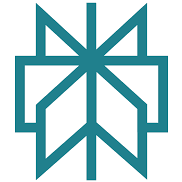How To Create 8 Week Coaching Program


Creating an 8-week coaching program can help you deliver consistent results for clients while growing your business. Here’s how to do it:
- Set Clear Goals: Use the S.M.A.R.T. framework to define specific, measurable outcomes for your program.
- Know Your Audience: Research your target market’s challenges and needs to tailor your program.
- Plan Weekly Structure: Organize topics like self-discovery, communication, and leadership into a step-by-step weekly plan.
- Engage Participants: Use group sessions, 1:1 coaching, and progress tracking tools to keep clients motivated.
- Create Materials: Develop action worksheets, video content, and tracking tools to support learning.
- Promote Your Program: Use lead magnets, social media, and referrals to attract participants.
Example Weekly Topics:
- Self-Discovery: Assess strengths and goals.
- Vision Setting: Define SMART goals.
- Communication: Build active listening skills.
- Emotional Intelligence: Learn self-awareness techniques.
- Influence Skills: Develop persuasion strategies.
- Conflict Management: Practice resolution techniques.
- Team Development: Explore leadership basics.
- Leadership Action Plan: Summarize and plan next steps.
Quick Tip: Use a centralized platform to manage content, track progress, and communicate effectively. Once your program is ready, focus on marketing strategies to attract clients and grow your business.
Set Program Goals and Target Market
Start by identifying clear goals and understanding your ideal participants. This foundation will help you design an effective 8-week coaching program.
Define Success Metrics
Use the S.M.A.R.T. framework to create goals that are specific, measurable, achievable, relevant, and time-bound.
Here are some key metrics to consider when planning your program:
| Metric Type | Examples | Measurement Method |
|---|---|---|
| Quantitative | Sales growth, weight loss | Pre/post assessments, tracking sheets |
| Qualitative | Confidence, communication skills | 360-degree feedback, self-reflection |
| Progress-based | Weekly milestones, skill-building | Goal attainment scaling |
| Business Impact | Revenue growth, client retention | Performance tracking |
"Establishing clear goals and objectives laid out from the start of the coaching journey ensures alignment in the coaching process, helping both coach and client measure progress including when objectives should be revised. The process of goal setting plays a fundamental part in tracking progress in coaching."
Research Target Audience Needs
Understanding your audience’s specific challenges allows you to focus your program on what matters most.
Research shows that successful coaching programs often cater to specific participant profiles, such as:
- Professionals seeking better work-life balance
- Entrepreneurs juggling multiple responsibilities
- Remote workers needing structure
- Creative individuals balancing artistic goals with productivity
- Corporate teams improving collaboration
- People navigating career changes
To gather insights about your audience:
- Conduct Initial Research: Tools like Answer the Public and Google Analytics can help you uncover common pain points.
- Gather Direct Feedback: Host free workshops or webinars to test your content and collect feedback. For example, Nick True used this approach to grow his subscriber base and revenue.
- Analyze Patterns: Pay attention to recurring challenges and goals mentioned during discovery calls or consultations. These patterns can reveal broader market needs.
Once you have a clear understanding of your audience and well-defined goals, you’ll be ready to structure your 8-week program effectively.
Build Your 8-Week Program Structure
Organize Weekly Topics
Creating a clear week-by-week structure helps participants build their skills step by step. Here’s an example of how to arrange the topics:
| Week | Focus Area | Key Activities |
|---|---|---|
| 1 | Self-Discovery | Personal assessments, identifying strengths |
| 2 | Vision Setting | Setting SMART goals, action planning |
| 3 | Communication | Active listening drills, feedback techniques |
| 4 | Emotional Intelligence | Activities for self-awareness, managing emotions |
| 5 | Influence Skills | Persuasion methods, building relationships |
| 6 | Conflict Management | Role-playing, resolution strategies |
| 7 | Team Development | Leadership basics, motivation techniques |
| 8 | Leadership Action Plan | Summarize learning, develop a personal action plan |
Once you’ve outlined the topics, you can dive into planning the weekly sessions.
Write Weekly Session Plans
Each session should follow a consistent format to keep participants engaged and on track:
- Opening (15–20 minutes)
Start by welcoming participants and reviewing their progress from the previous week. - Core Content (30–40 minutes)
Teach new concepts and incorporate hands-on activities, like listening exercises or role-playing, depending on the week’s focus. - Implementation Planning (20–30 minutes)
Help participants create actionable steps and assign homework to reinforce the session’s objectives.
This structure ensures every session is focused and productive.
Add Progress Checkpoints
Regular evaluations are key to tracking success and keeping participants motivated. Anne Scoular, Founder of Meyler Campbell, emphasizes:
"Regular progress assessments aren’t just about capturing feedback or results to gauge programme effectiveness; they’re also an essential ingredient in building a strong coaching relationship".
Here’s how to include these checkpoints:
- Weekly Check-ins: Quick updates at the start of each session
- Mid-Program Review: A detailed progress review after Week 4
- Final Evaluation: A comprehensive assessment at the end of Week 8
| Checkpoint Type | Measurement Tools | Frequency |
|---|---|---|
| Self-Assessment | Reflection journals, rating scales | Weekly |
| Skill Application | Practice tasks, applying skills in real-life scenarios | Bi-weekly |
| Goal Achievement | Milestone reviews, progress tracking sheets | Monthly |
| Overall Impact | 360-degree feedback, outcome evaluations | Start/Middle/End |
These checkpoints not only measure progress but also strengthen the coaching experience.
Choose Program Delivery Methods
Once you’ve outlined your program structure, it’s time to decide how you’ll deliver the content. The right delivery methods help ensure your material is both engaging and effective.
Select Session Types
Choosing the right mix of session formats is key to meeting your program goals. Here’s a breakdown of common formats and what they offer:
| Format | Best For | Benefits | Considerations |
|---|---|---|---|
| Group Sessions | Practicing skills and peer learning | Builds a sense of community; scalable | Limited individual attention |
| 1:1 Sessions | Personal work and private concerns | Offers personalized attention; flexible | Time-consuming; less scalable |
| Pre-recorded Content | Sharing foundational knowledge at a self-paced rate | Always accessible; consistent delivery | Can lead to lower engagement |
| Live Workshops | Interactive exercises with real-time feedback | Dynamic learning; immediate clarification | Requires careful scheduling |
Once you’ve chosen the formats, decide how and where you’ll host these sessions.
Set Up Content Platform
A centralized platform is essential for organizing and delivering your materials. Crevio is one option that can help you manage everything in one place. Here’s how to set it up:
- Organize materials into weekly modules: Include recordings, worksheets, resources, and tools to track progress.
- Implement tiered access levels: Release content progressively over the 8-week program, ensuring participants receive materials in a structured way.
With your platform ready, the next step is to keep participants engaged through consistent communication.
Plan Communication Methods
A well-thought-out communication plan keeps participants on track and motivated. Here’s an example of how you can structure communication:
| Timing | Channel | Purpose |
|---|---|---|
| Weekly | Group Chat | Peer support and quick questions |
| Bi-weekly | Live Q&A | Deep-dive discussions |
| As needed | Direct Messages | Personal support |
| Daily | Progress Updates | Accountability and tracking |
To enhance engagement, consider adding features like:
- A Community Hub: Encourage group discussions and peer support.
- Progress Tracking Tools: Use gamification elements like badges to motivate participants.
These steps will help ensure your program runs smoothly and keeps participants engaged throughout the journey.
Create Program Materials
Design Action Worksheets
Worksheets should guide participants in taking specific actions. Each one needs to be clear, practical, and actionable.
Here’s a simple structure to follow:
| Component | Purpose | Example |
|---|---|---|
| Title & Intro | Sets the stage and learning goals | "Week 3: Client Avatar Development – Define your ideal client profile" |
| Key Concepts | Outlines main ideas | 2-3 core ideas with short explanations |
| Reflection Questions | Encourages deeper thinking | "What specific challenges does your ideal client face?" |
| Action Steps | Provides clear tasks | Specific tasks with completion checkboxes |
| Progress Tracking | Tracks advancement | Weekly milestone markers |
"A great handout helps people identify powerful learnings, take action and gives them something to remember you by. In short – branded worksheets and tools are like a brochure for you that people want to keep." – Emma-Louise Elsey, Founder and Former CEO of The Coaching Tools Company
Once your worksheets are ready, consider enhancing your program with multimedia and written resources to deepen participants’ understanding.
Add Learning Resources
Organize your materials by module on Crevio. Here’s what to include:
- Video Content: Create a library with short, engaging videos, such as:
- Weekly concept introductions (5-10 minutes)
- Tutorials (15-20 minutes)
- Real-world examples of implementation
- Success stories or case studies
- Supporting Documents: Provide detailed reference materials like:
- Topic summaries
- Step-by-step guides
- Resource lists
- Templates or frameworks
These resources ensure participants have everything they need to succeed.
Build Progress Tracking Tools
Use tracking tools to measure progress and celebrate achievements. These tools should capture both measurable outcomes and personal growth.
| Tracking Element | Purpose | Implementation |
|---|---|---|
| Weekly Check-ins | Track short-term progress | Digital forms with specific metrics |
| Achievement Dashboard | Visualize overall progress | Interactive progress bars and milestones |
| Reflection Journal | Record insights and growth | Weekly structured templates |
| Action Completion Log | Track task completion | Checklists with timestamps |
Leverage Crevio’s platform to automate progress tracking. Features like milestone notifications and regular check-in reminders help maintain engagement and accountability throughout the program.
Keep Participants Active and Engaged
Maintain involvement by planning activities, encouraging group interaction, and gathering regular feedback.
Use Group Activities
Design group activities to encourage collaboration and active participation:
| Activity Type | Purpose | How to Implement |
|---|---|---|
| Paired Exercises | Build peer connections | Pair participants to review weekly goals |
| Group Challenges | Encourage teamwork | Assign weekly team-based tasks |
| Accountability Circles | Support commitment | Create small groups (3–4) for daily check-ins |
| Live Workshops | Facilitate real-time learning | Host interactive sessions every two weeks |
Lambda School provides an example of how a structured schedule can keep participants engaged:
"Starting at 8 a.m., we had an hour to dive into the pre-work. Then we’d move onto a two-hour live lecture with an instructor. Afterward, we would break for an hour’s lunch. The rest of the day was dedicated to homework assignments, accountability, and mentoring. We would also have end-of-day wrap-ups, where a group of us would complete a coding challenge together." – Dominique Maack, Lambda School Graduate
By integrating group activities into your program, you can create a more engaging and committed learning environment.
Build Group Connections
In addition to activities, fostering strong relationships among participants enhances the experience. Create spaces for meaningful interaction:
1. Daily Check-in Threads
Post discussion prompts that encourage participants to share updates and challenges. Keep these consistent to build a routine.
2. Weekly Celebration Sessions
Organize group calls to highlight achievements and success stories. These sessions inspire and motivate participants through peer recognition.
3. Peer Support Networks
Set up small accountability groups (3–4 people) that meet regularly to provide motivation and support between main sessions.
Get Regular Feedback
Feedback helps tailor the program to participant needs while keeping them engaged:
| Feedback Method | Timing | Purpose |
|---|---|---|
| Quick Polls | Weekly | Measure session effectiveness |
| Progress Surveys | Bi-weekly | Assess learning outcomes |
| 1:1 Check-ins | Monthly | Address individual concerns |
| Anonymous Feedback | Ongoing | Gather honest and candid insights |
Use platform analytics to track:
- Peak discussion activity times
- Popular content types
- Preferred communication methods
- Participation in group activities
Leverage these insights to fine-tune your program and maintain high engagement levels throughout the 8-week period. Acting on feedback promptly shows participants that their input is valued and encourages continued involvement.
Start and Promote Your Program
Set Up Program Systems
Make sure your systems are ready for a smooth launch. Use a detailed pre-launch checklist to cover all the essentials:
| System Component | Setup Tasks | Purpose |
|---|---|---|
| Payment Processing | Set up Stripe integration, configure payment plans | Manage secure transactions |
| Content Delivery | Upload materials, test permissions | Ensure participants can access content easily |
| Communication | Create email templates, set up notifications | Keep clients informed and engaged |
| Onboarding | Develop welcome guides, create assessment forms | Help participants get started smoothly |
| Progress Tracking | Install tracking tools, set up dashboards | Monitor participant progress |
"Typically, coaches will price their programs as a package. This just means that you sell your entire program for one lump-sum price, rather than pricing each individual session".
Reach Target Clients
Once your systems are in place, it’s time to focus on attracting participants. With everything set up and ready to go, you can now use targeted marketing strategies to connect with your ideal clients. Pricing your program between $1,500 to $2,800 is a good starting point to stay competitive in the market.
Here are some effective ways to promote your program:
- Create Lead Magnets That Work
Offer free resources that solve specific problems for your audience. This builds trust and shows the value of your program. Think guides, checklists, or webinars that highlight your expertise. - Use Social Media to Your Advantage
Share content that resonates with your audience.
"Value doesn’t mean dry posts full of facts and figures. People connect best when you share stories, tell fun facts, and, in general, entertain them".
- Develop Referral Networks
Ask for referrals with a simple, friendly message:
"Hey! I’m thrilled I was able to help you ____. Would you happen to know anyone else who’s looking for my services? I’d be grateful if you would share my information with them".
If you’re considering paid ads, proceed carefully.
"A lot of coaches are losing a lot of money by jumping into Facebook ads… If you’ve decided that ads should be a part of your acquisition strategy, hire a professional who’s up to date on ads. That will get you the most out of your investment, and leave you free to do what you do best".
Focus on meaningful connections over quick wins.
"I would rather have a slightly smaller list of hyper-engaged active buyers, than a larger list of people who I’m afraid to email. I’ve built much stronger relationships with the people who have stuck around".
Next Steps
Here’s how to turn your program design into actionable tasks.
Start by identifying your coaching niche and target audience through detailed market research. If you discover a gap in the market, shape your program to meet the specific needs and challenges of that audience.
Once you’ve structured your program and developed a delivery plan, use the following framework to guide your launch:
| Phase | Key Actions | Timeline |
|---|---|---|
| Planning | Define program purpose and outcomes | Week 1 |
| Content | Create session outlines and materials | Weeks 2-3 |
| Systems | Set up delivery and tracking tools | Week 4 |
| Testing | Run through all program components | Week 5 |
Here are the steps to take:
- Map Your Program Structure
Outline all 8 weeks in detail, specifying objectives and activities for each session. Start with an engaging onboarding session to set clear expectations from the beginning. - Develop Assessment Tools
Create methods to track progress that align with your program’s goals. Include tools like performance reviews, behavioral assessments, and self-report questionnaires to measure client progress effectively. - Prepare Launch Materials
Get your marketing assets ready, such as:- A registration page
- A welcome email sequence
- A program handbook
- Progress tracking tools
Test all technical elements and set up automation tools to ensure everything runs smoothly.
Lastly, focus on building relationships in your target market. Strategic partnerships and community engagement can help strengthen your program’s reach and impact.






